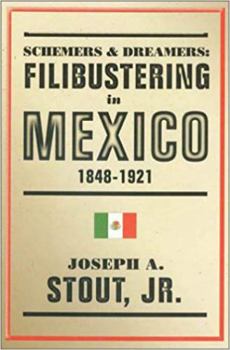Schemers and Dreamers: Filibustering in Mexico, 1848-1921
Select Format
Select Condition 
Book Overview
In the mid-nineteenth century various groups formed north of the border to invade Mexico. They were called filibusters (from the Dutch vribuiter , meaning pirate or free booty). The Mexican government saw these invasions as a threat to sovereignty. To Mexico it was significant that the groups recruited, organized, and plotted their entradas from the United States in full view of the U.S. government even as newspapers in both countries published dozens of articles about the endeavors. There were many types of filibusters, from small groups of cutthroats who were satisfied with raiding and stealing, to those whose goal was to conquer territory. Many names of the privateers are familiar--William Walker and Henry Alexander Crabb, for instance. Others remain elusive, and they are the focus of Joseph A. Stout Jr.'s book. In the mid-nineteenth century José María Carvajal took his chances in Tamaulipas and Coahuila, and Charles de Pindray plotted to establish a mining colony in Sonora. Juan Napoleón Zerman had the audacity to raise a small army and invade Baja California wearing an absurd uniform capped off with a sombrero decorated with chicken feathers. None of the filibusters were successful and many men lost their lives in chimeric escapades along the border.
Format:Hardcover
Language:English
ISBN:0875652581
ISBN13:9780875652580
Release Date:May 2002
Publisher:Texas Christian University Press
Length:148 Pages
Weight:0.85 lbs.
Dimensions:0.8" x 6.4" x 9.3"
Related Subjects
HistoryCustomer Reviews
0 rating





